11. Chittorgarh tour
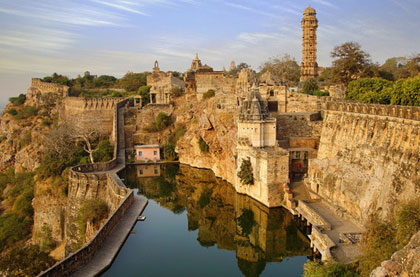 The former capital of the Sisodia rulers of Udaipur, Chittaur perches atop the scraggy spine of the Aravallis. Sacked by Allaudin Khilji in the 14th century, by the sultans of Gujarat in the 16th century, and finally by the Mughal emperor Akbar’s forces, it was abandoned by its rulers who vowed never to return unless they could avenge their defeat. The few remaining palaces and towers are part of its stirring history. Chittorgarh has always been the pride and glory of Rajasthan. Once the place full of citadels, graceful palaces and chhattris, today lies in ruins. But these ruins echo the tales of valour and romance of the past, very unique to Rajasthan and the Rajput people.
The former capital of the Sisodia rulers of Udaipur, Chittaur perches atop the scraggy spine of the Aravallis. Sacked by Allaudin Khilji in the 14th century, by the sultans of Gujarat in the 16th century, and finally by the Mughal emperor Akbar’s forces, it was abandoned by its rulers who vowed never to return unless they could avenge their defeat. The few remaining palaces and towers are part of its stirring history. Chittorgarh has always been the pride and glory of Rajasthan. Once the place full of citadels, graceful palaces and chhattris, today lies in ruins. But these ruins echo the tales of valour and romance of the past, very unique to Rajasthan and the Rajput people.
VISIT TO OUR WEBSITE FOR Chittorgarh Tour.
12. Jaipur Tour
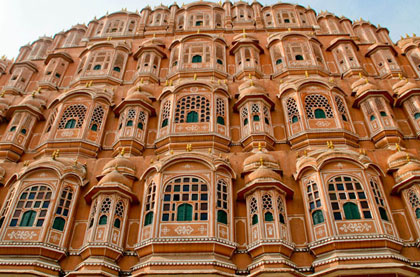 The Capital of the modern state of Rajasthan, Jaipur is a modern city built according to the specifications laid down in ancient architectural texts. Known as the pink city on account of the flush colour of its sandstone palaces, it is a major centre for handicrafts. Its former capital, Amber, consists of fortifications with an interesting rang of highly decorated public and private apartments. Jaipur, the ‘Pink City’, has been the capital of erstwhile Jaipur state since its inception in 1727 AD, It was founded by Sawai Jai Singh II, a great ruler as well as renowned mathematician and astrologer. Vidhyadhar Bhattacharya, designed Jaipur as per the Hindu treatise, Shilp Shastra.
The Capital of the modern state of Rajasthan, Jaipur is a modern city built according to the specifications laid down in ancient architectural texts. Known as the pink city on account of the flush colour of its sandstone palaces, it is a major centre for handicrafts. Its former capital, Amber, consists of fortifications with an interesting rang of highly decorated public and private apartments. Jaipur, the ‘Pink City’, has been the capital of erstwhile Jaipur state since its inception in 1727 AD, It was founded by Sawai Jai Singh II, a great ruler as well as renowned mathematician and astrologer. Vidhyadhar Bhattacharya, designed Jaipur as per the Hindu treatise, Shilp Shastra.
VISIT TO OUR WEBSITE FOR Jaipur Tour.
13. Jhalawar Tour
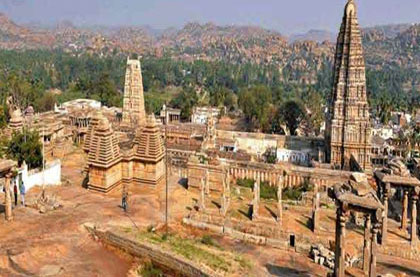 The princely state of the Jhalas, Jhalawar was created in 1838 A.D., after being separated from Kota by the British. Remarkable contributions from various rulers including Zalim Singh I made it a culturally rich state. Lying in the south-eastern region of Rajasthan at the edge of the Malwa plateau, Jhalawar has rocky but water-laden verdant landscape, unlike much of Rajasthan. With some exquisite pre-historic cave paintings, massive forts, thickly wooded forests and exotic wildlife variety. Jhalawar boasts of rich historic as well as natural wealth. One can spot countless species of birds as one drives past the lush countryside. Red poppy fields and orange laden orchards make the countryside all the more fascinating and colourful during winters. The area around Bhawani Mandi is known for contributing a major share to the production of citrus in the country.
The princely state of the Jhalas, Jhalawar was created in 1838 A.D., after being separated from Kota by the British. Remarkable contributions from various rulers including Zalim Singh I made it a culturally rich state. Lying in the south-eastern region of Rajasthan at the edge of the Malwa plateau, Jhalawar has rocky but water-laden verdant landscape, unlike much of Rajasthan. With some exquisite pre-historic cave paintings, massive forts, thickly wooded forests and exotic wildlife variety. Jhalawar boasts of rich historic as well as natural wealth. One can spot countless species of birds as one drives past the lush countryside. Red poppy fields and orange laden orchards make the countryside all the more fascinating and colourful during winters. The area around Bhawani Mandi is known for contributing a major share to the production of citrus in the country.
VISIT TO OUR WEBSITE FOR Jhalawar Tour.
14. Kumbhalgarh Tour
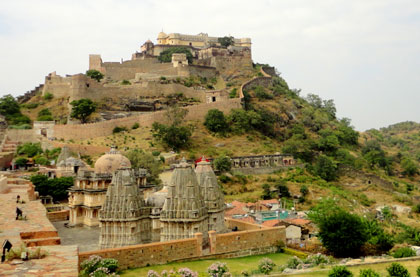 Kumbhalgarh is the second most important bastion in the Mewar region, after Chittorgarh. Where it now stands, was once the site of an ancient citadel dating back to the 2nd century AD. That citadel belonged to a Jain descendant of India’s Mauryan emperors. Rana Kumbha founded the fort of Kumbhalgarh in the 15th century. Kumbhalgarh in Rajasthan, India is one of the few forts in India that remain unconquered till date. One of the reasons behind this is the inaccessibility and hostile topography of the fort. Maharana Fateh Singh got the fort renovated in the 19th century. The fort provided refuge to the rulers of Mewar in the times of conflict, especially Udai, the baby king of Mewar. It is also the birthplace of Maharana Pratap, a legendary King of Mewar.
Kumbhalgarh is the second most important bastion in the Mewar region, after Chittorgarh. Where it now stands, was once the site of an ancient citadel dating back to the 2nd century AD. That citadel belonged to a Jain descendant of India’s Mauryan emperors. Rana Kumbha founded the fort of Kumbhalgarh in the 15th century. Kumbhalgarh in Rajasthan, India is one of the few forts in India that remain unconquered till date. One of the reasons behind this is the inaccessibility and hostile topography of the fort. Maharana Fateh Singh got the fort renovated in the 19th century. The fort provided refuge to the rulers of Mewar in the times of conflict, especially Udai, the baby king of Mewar. It is also the birthplace of Maharana Pratap, a legendary King of Mewar.
VISIT TO OUR WEBSITE FOR Kumbhalgarh Tour.
15. Mandawa Tour
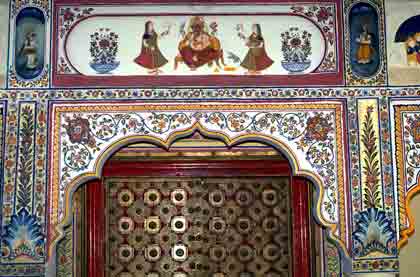 Mandawa is situated in the north Indian state of Rajasthan around 190 km off Jaipur, the capital of the state. The town lies between latitude 28.06° in the north and longitude 75.20° in the east. The fort town of Mandawa is well connected with the other places in region through a good network of roads. Mandawa was settled and fortified in 18th century by the dominant merchant families of the region. The wealthy businessmen of the village constructed many havelis and baolis with colored painting adorning their walls. Later on, with the migration of these merchant families, their old settlements remained in total obscurity with no one to look after them.
Mandawa is situated in the north Indian state of Rajasthan around 190 km off Jaipur, the capital of the state. The town lies between latitude 28.06° in the north and longitude 75.20° in the east. The fort town of Mandawa is well connected with the other places in region through a good network of roads. Mandawa was settled and fortified in 18th century by the dominant merchant families of the region. The wealthy businessmen of the village constructed many havelis and baolis with colored painting adorning their walls. Later on, with the migration of these merchant families, their old settlements remained in total obscurity with no one to look after them.
VISIT TO OUR WEBSITE FOR Mandawa Tour.
16. Pushkar Tour
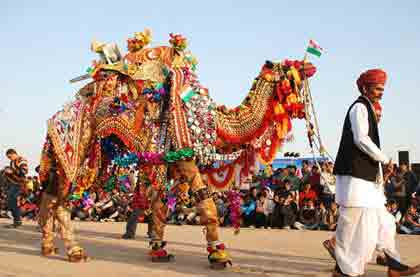 Pushkar in Rajasthan is a favored destination of North India. Hundreds of foreigners throng this place all through the year. The Pushkar fair is an important occassion when tourists flock Pushkar, however it is not only at this time of the year when tourism flourishes. Pushkar is the flavour of every season. Pushkar is a pilgrimage site and is considered one of the holiest sites in India. The semicircular Pushkar Lake is believed to be extremely holy and has 52 bathing ghats or steps along its banks. Devotees bathe in Pushkar Lake and pray at the Temple dedicated to Lord Brahma nearby. Pushkar is home to the only Brahma Temple in India.
Pushkar in Rajasthan is a favored destination of North India. Hundreds of foreigners throng this place all through the year. The Pushkar fair is an important occassion when tourists flock Pushkar, however it is not only at this time of the year when tourism flourishes. Pushkar is the flavour of every season. Pushkar is a pilgrimage site and is considered one of the holiest sites in India. The semicircular Pushkar Lake is believed to be extremely holy and has 52 bathing ghats or steps along its banks. Devotees bathe in Pushkar Lake and pray at the Temple dedicated to Lord Brahma nearby. Pushkar is home to the only Brahma Temple in India.
VISIT TO OUR WEBSITE FOR Pushkar Tour.
17. Ranakpur Tour
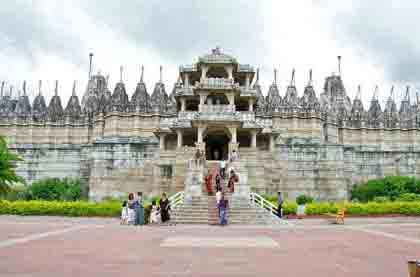 A 15th century group of temples raised by Jain merchants, these are characterised by the fine quality of their carving. Ranakpur in the state of Rajasthan is one of the five most important Jain pilgrimage. It is home to an exceptionally beautiful temple complex in the Aravali ranges and a must visit for the tourists coming to this region. It is situated around 60 km north of Udaipur in Pali district and boasts of one of the largest and most important Jain Temples in the country. The place is well connected through a road network to other places in the region. There are several places of tourist attractions in Ranakpur, but it is the Jain temples that is the hub of activity.
A 15th century group of temples raised by Jain merchants, these are characterised by the fine quality of their carving. Ranakpur in the state of Rajasthan is one of the five most important Jain pilgrimage. It is home to an exceptionally beautiful temple complex in the Aravali ranges and a must visit for the tourists coming to this region. It is situated around 60 km north of Udaipur in Pali district and boasts of one of the largest and most important Jain Temples in the country. The place is well connected through a road network to other places in the region. There are several places of tourist attractions in Ranakpur, but it is the Jain temples that is the hub of activity.
VISIT TO OUR WEBSITE FOR Ranakpur Tour.
18. Sariska Tour
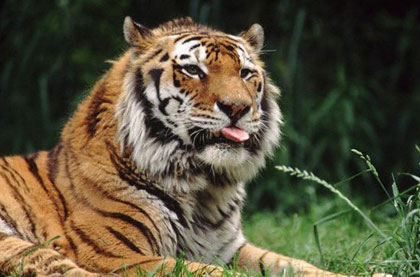 lies within the Golden Tourist Triangle of Delhi, Jaipur and Agra, and is an important halt for the traveller. It is one of the last surviving densely forested tracts along the Aravalli mountain range and the 800km2 dry deciduous jungles are interspersed with forest, scrubland and water-bodies, which provide fruit, fodder and water for its birds, mammals and reptiles. The Park is rich in avifauna as well; besides the omnipresent Peafowl other birds such as woodpeckers, partridges, quails, owls, treepies and several species of raptors may be spotted with patience and bit of luck.
lies within the Golden Tourist Triangle of Delhi, Jaipur and Agra, and is an important halt for the traveller. It is one of the last surviving densely forested tracts along the Aravalli mountain range and the 800km2 dry deciduous jungles are interspersed with forest, scrubland and water-bodies, which provide fruit, fodder and water for its birds, mammals and reptiles. The Park is rich in avifauna as well; besides the omnipresent Peafowl other birds such as woodpeckers, partridges, quails, owls, treepies and several species of raptors may be spotted with patience and bit of luck.
VISIT TO OUR WEBSITE FOR Sariska Tour.
19. Shekhawati Tour
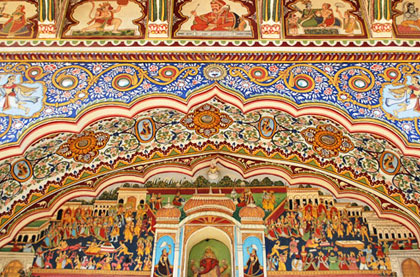 The only reason a traveller visits the Shekhawati region, besides relaxing in a heritage resort or riding a horse, is to go for frescoes hunt. The whole terrain is a huge treasure comprises of paintings and colourful murals. ‘Shekhawati’, meaning “the land of Shekha’s clan” derives its name from Rao Shekha (1433 AD-1488 AD) a scion of the Kachhwaha family of Jaipur. Earlier a part of the former Jaipur state, it now comprises of the districts of Jhunjhunu and Sikar. As you travel more closer you will see seven princes, stuck forever on a wall, holding identical swords and look grim, perhaps because they have been standing like this for over 60 years.
The only reason a traveller visits the Shekhawati region, besides relaxing in a heritage resort or riding a horse, is to go for frescoes hunt. The whole terrain is a huge treasure comprises of paintings and colourful murals. ‘Shekhawati’, meaning “the land of Shekha’s clan” derives its name from Rao Shekha (1433 AD-1488 AD) a scion of the Kachhwaha family of Jaipur. Earlier a part of the former Jaipur state, it now comprises of the districts of Jhunjhunu and Sikar. As you travel more closer you will see seven princes, stuck forever on a wall, holding identical swords and look grim, perhaps because they have been standing like this for over 60 years.
VISIT TO OUR WEBSITE FOR Shekhawati Tour.
20. Udaipur Tour
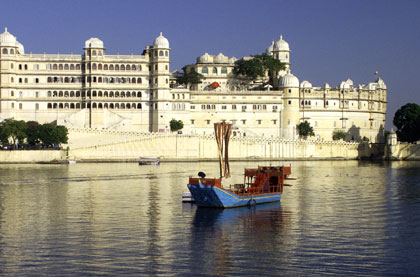 Udaipur is much more than an oasis in the desert with its beautiful lakes, exquisite palaces and architectural heritage and deserves the nickname of ‘the Venice of the East’. The Lake Palace situated on Jag Niwas Island in the midst of Lake Pichola is the supreme example of its delicate architecture and refined culture. The banks of the lake have another beautiful building to boast of – the magnificent City Palace. Known for its arts and crafts and miniature paintings, Shilp Gram festival is a favorite tourist attraction of the city. Maharana Udai Singh II founded Udaipur in 1568 after he lost Chittorgarh to Mughal Emperor Akbar. It is believed that a saint meditating on a hill near Lake Pichola guided him to establish his capital here as it is surrounded by Aravallis, forests and lakes that makes it a safer place than Chittorgarh.
Udaipur is much more than an oasis in the desert with its beautiful lakes, exquisite palaces and architectural heritage and deserves the nickname of ‘the Venice of the East’. The Lake Palace situated on Jag Niwas Island in the midst of Lake Pichola is the supreme example of its delicate architecture and refined culture. The banks of the lake have another beautiful building to boast of – the magnificent City Palace. Known for its arts and crafts and miniature paintings, Shilp Gram festival is a favorite tourist attraction of the city. Maharana Udai Singh II founded Udaipur in 1568 after he lost Chittorgarh to Mughal Emperor Akbar. It is believed that a saint meditating on a hill near Lake Pichola guided him to establish his capital here as it is surrounded by Aravallis, forests and lakes that makes it a safer place than Chittorgarh.
VISIT TO OUR WEBSITE FOR Udaipur Tour.
